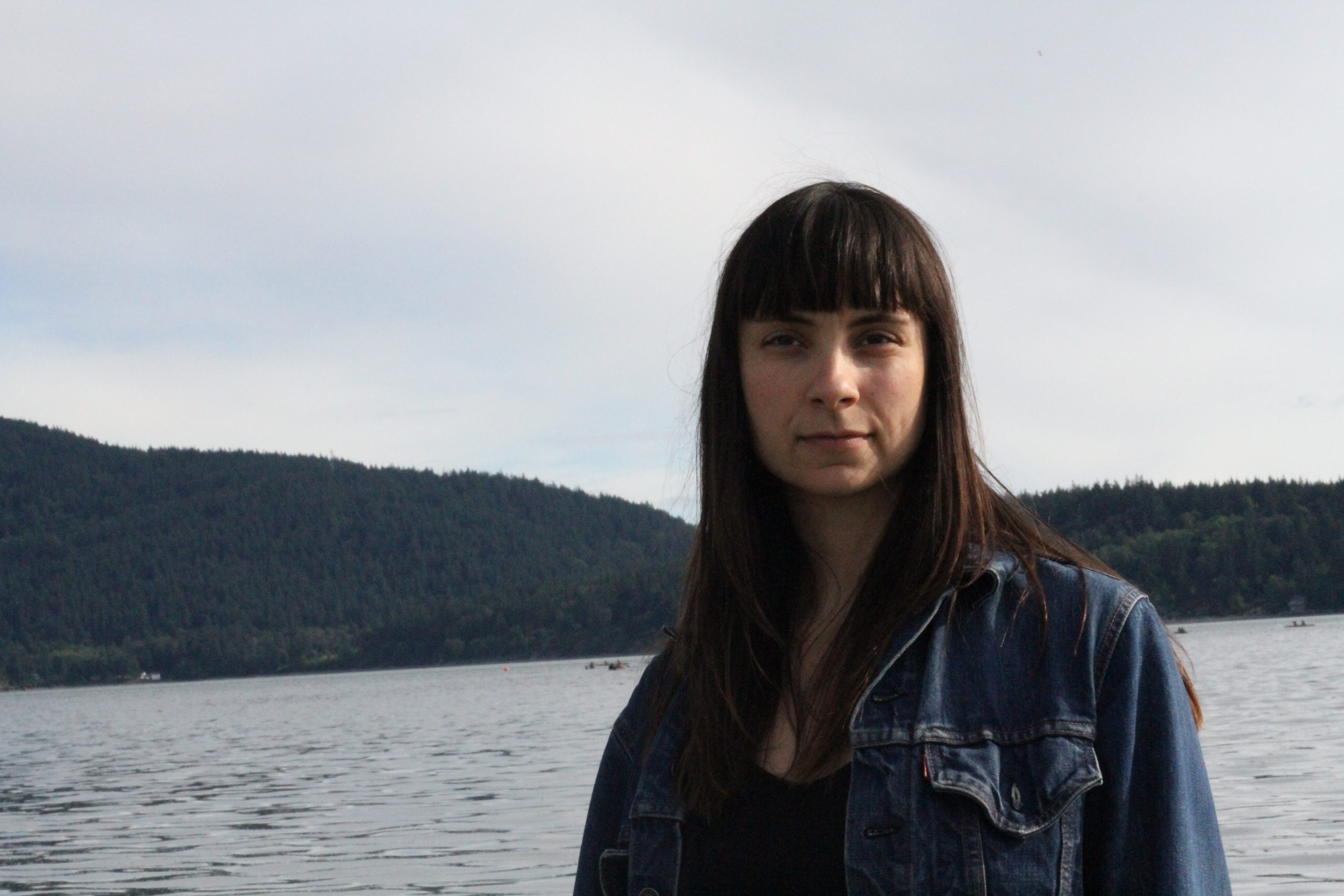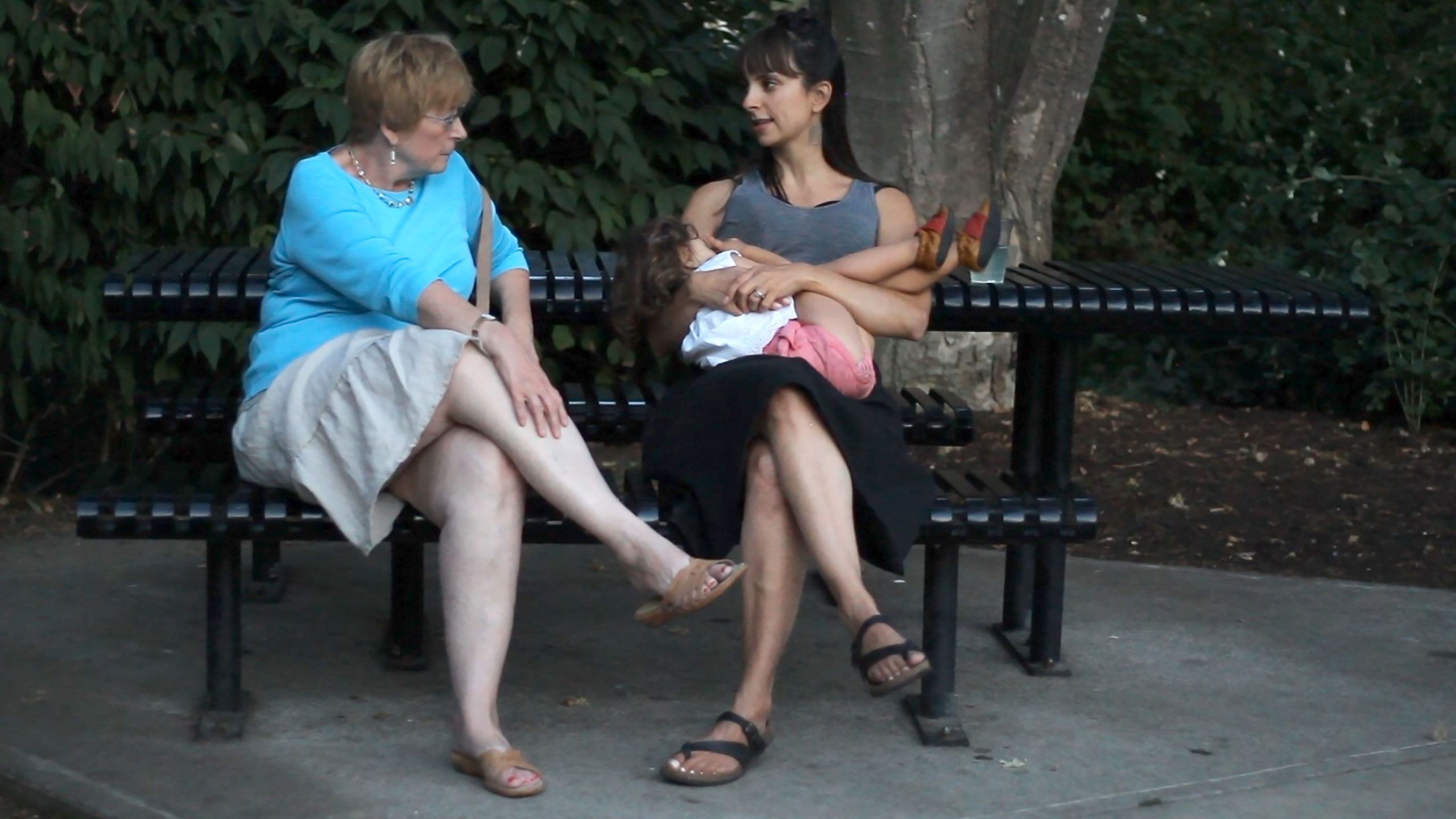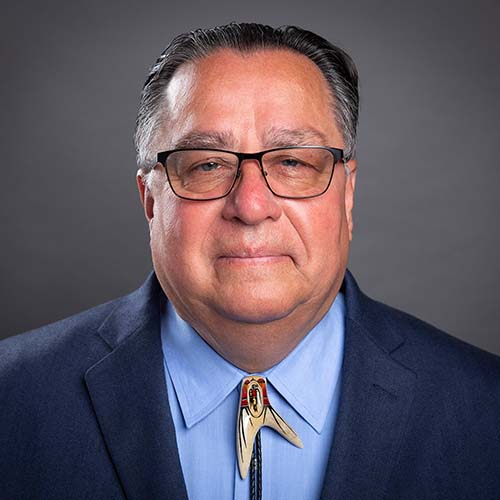
- Details
- By Erika Fredrickson - Montana Free Press
The Montanan-made documentary applies a wide-angle lens to a personal story of adoption and assimilation.
“Daughter of a Lost Bird” — a documentary made by and featuring two Montana Native women — is less about closure than about openings. There is no tidy bow at the end, and no singular takeaway. It plays out unapologetically in the realm of loose ends, liminal spaces and uncertainties.
The documentary, which premiered at the 2021 Maoriland Film Festival in New Zealand, follows adult adoptee Kendra Potter, who decides to find connection with her Native identity and culture. It begins with Potter at age 34 as she meets her birth mother and discovers, over the course of eight years, her ties to the Lummi Nation — a Native American tribe located in the coastal region of Washington state, near Bellingham. But “Daughter of a Lost Bird” isn’t just about one person’s identity in a vacuum, and that’s what makes it complicated and unsettling. It’s really an exploration of why context matters.
As Potter begins to unravel the layers of her own identity, she discovers answers that are equal parts murky, illuminating, tragic and empowering. Brooke Pepion Swaney, a Blackfeet/Salish filmmaker who grew up in Montana and now resides in Polson, uses Potter’s story to cast light on a larger national narrative. As Potter learns about herself, she learns more about the events that inform her own past and that of other Native adoptees: in particular, the troubling history of Indigenous genocide and assimilation, from Native American boarding schools to a recent Supreme Court case that threatens a long-held Native American adoption law.
Potter is an actress with a variety of roles under her belt, including parts in a Hallmark Holiday movie, a Chris Rock rom-com, several independent shorts and the Montana-made feature film “Winter in the Blood.” But being the subject of “Daughter of a Lost Bird” meant being herself in a documentary that began with an uncertain storyline and grapples with ambiguous personal feelings. It’s what makes her a nuanced protagonist.
In a recent interview conducted while walking along the bank of the Clark Fork in Missoula, where she lives, Potter talked about her life before the making of the documentary. She grew up in Lake Oswego, Oregon, in what she describes as a supportive and loving white, upper-middle-class, adoptive family. She graduated from the University of Montana’s School of Theatre and Dance and spent the next decade living and working as an actor in Los Angeles and New York. During those early acting years, she began to ask herself questions like: Whose voice is speaking through me? Do I have a right to play these roles, with no knowledge of my culture? Where did I come from?
In 2012 she starred in a short film called “OK Breathe Auralee,” also directed by Swaney. In that film she played Auralee, an adult Native adoptee like herself, whose desire for a baby leads her to contemplate her Native roots. Around the time she won an award for “OK Breathe Auralee,” Potter learned she was pregnant with a daughter and, like her character in the film, began to consider her Native roots.
But it was Swaney who pushed Potter to reach out to her Native family and begin exploring the complexities of her identity. In a recent interview, Swaney acknowledged that she’s most comfortable with narrative fiction, but decided to film Potter’s story as a documentary. Potter agreed, and they began by contacting her birth mother, April Kowalski, asking if she would meet with Potter on camera.
“I knew Kendra would meet her family and go back to her homelands and we would film the things in between,” Swaney says. “But I didn’t know that April was going to be such a character in the film. It almost became like a dual protagonist situation in a way.”
Potter meets up with Kowalski in a key scene early in the film. They hug, and Kowalski tells Potter about her life. Like Potter, Kowalskiwas adopted, but she had a far different experience, marked by emotional and physical abuse, which led to addiction and three years trapped in sex trafficking. “Lost bird” is a widely used term across Native cultures for adults who were removed or adopted as children out of tribal communities into white families. The name comes from Zintakála Nuni Lost Bird, a Lakota infant found alive after the 1890 Wounded Knee Massacre and adopted by a white U.S. Army general. Kowalski is a lost bird, and Potter the progeny of a lost bird. Both are trying to learn who they are.
And yet, Potter says, the meeting with Kowalski didn’t offer the tension a film usually needs.
“Neither of us felt grief about having not had my childhood together,” she says. “If anything, it just continued to feel like this happy, happy story when we needed some conflict.”
The other problem was that, despite her curiosity, Potter didn’t feel conflicted about her life as she knew it.
“It just feels like my Native friends, in general, and this film crew in particular, look at me like I’m missing an appendage — like I’m a three-legged dog,” Potter says, laughing. “And they’re not wrong. But it’s like, I’ve been three-legged my whole life, right? And I’m getting around just fine. I understand that for someone who has all their limbs there might be grief. But at the time, I felt no grief.”
Swaney says it was hard to accept that Potter could feel content or complete without a better understanding of her own heritage. As an enrolled member of the Blackfeet Nation with Bitterroot Salish blood, Swaney says she navigates her own complexities of family and identity, but she felt strongly that her subject’s self-understanding of Native identity was essential.
Potter said she told Swaney, “Listen, we can’t make a film about someone with a hole when they don’t feel like there’s a hole. If anything, we’re just gonna have to make a story about how incredibly well-assimilated I am. Not as a celebration, but as an honest truth.”
As that idea simmered, a new element of the story emerged when the cast and crew met with Terry Cross, assistant director for the National Indian Child Welfare Association. In the chronology of the film, Cross shows up toward the end. In reality, Swaney and Potter met him early in the filmmaking process and Swaney says he provided the point of tension they needed: The Indian Adoption Project and the Indian Child Welfare Act.
 Sandy Mylenchuk adopted Kendra Potter (seen here with her daughter, Sukha) when she was a child. Now, Mylenchuk and her husband, Larry, are supporting Kendra’s decision to learn about her Native background and the issues surrounding tribal adoption. (Photo/Brooke Swaney)
Sandy Mylenchuk adopted Kendra Potter (seen here with her daughter, Sukha) when she was a child. Now, Mylenchuk and her husband, Larry, are supporting Kendra’s decision to learn about her Native background and the issues surrounding tribal adoption. (Photo/Brooke Swaney)
The Indian Adoption Project was a federal program that acquired Indian children from 1958 to 1967 with the help of adoption organizations and churches. About a third of Indian children across the U.S. were separated from their families during that time. The Indian Child Welfare Act of 1978 was instituted in response to the adoption project. The act was designed to keep Native children with their families and tribal communities when possible, and in doing so, keep them connected to their culture. The Indian Child Welfare Act is currently being challenged.
Brackeen vs. Haaland is a pending U.S. Supreme Court case that began with one white family hoping to adopt a Native child and has since expanded to include Texas, Louisiana, Indiana and individual plaintiffs seeking to declare the ICWA unconstitutional. A podcast called “This Land,” produced by Crooked Media and hosted by investigative journalist Rebecca Nagle, has recently been exposing the money and motivations behind the lawsuit. Nagle and a small team of reporters discovered that the attorneys representing Brackeen have a history of lawsuits aimed at dismantling the legal structure that currently upholds many Native American rights. Just as the assimilation programs that led to Indian boarding schools were blatantly documented as a way to eliminate American Indians and take land, the fight against the ICWA has the well-documented appearance of a land grab.
“This challenge to the law is particularly scary right now because it could have ripple effects on not just Native kids who are still being overrepresented in foster care, despite the law, but on tribal nations,” Swaney says. “Indigenous people are not an ethnic minority or a racial minority. We are a political group because we have government-to-government treaties with the federal government. So yes, we are different people, but we have this special status that our ancestors have been fighting tooth and nail to preserve.”
Swaney was generally aware of such laws and policies, including the Indian Adoption Project, but hearing the details drove home the issue’s urgency.
"As I was watching [April and Kendra] absorbing all of this information from Terry Cross, I realized that they didn’t know any of it,” Swaney says. “Because they’ve been raised in this non-Indigenous society. And so if they don’t know, then certainly Regular Joe doesn’t know. And it just became more important to me that there had to be some of this context [in the film].”
Swaney had wanted to make a character-driven documentary, in which she let her protagonists drive the story. But now she got involved. She was educating her protagonists about their own backgrounds — and it was having an impact on them.
Even more uncomfortable for Swaney was when Potter and film editor Kristen Swanbeck insisted Swaney become part of the film as the filmmaker driving the story and also a friend helping Potter find her missing fourth leg.
“Sometimes the antagonist in a story is the person that pushes the main person into action,” Swaney says. “And I feel like that’s me, actually. I am the inciting incident in some ways in Kendra’s story.”
In the film, Potter grapples with issues of identity and assimilation out loud.
“I’m realizing that I am a perfect example of assimilation, a perfect example of ‘kill the Indian, save the man,’” she says in the film. “I am a saved man. And a dead Indian. I don’t know. I mean it’s tragic. I just don’t know how to be with that.”
It wasn’t until after making the film that Potter said she started feeling angry. Not at individuals, but at the systems and policies that have destroyed many Native lives. And she realized that despite having a life she wouldn’t trade, she does feel more whole now.
“I don’t feel bad about anything that’s happened for me,” she says. “And I also feel uniquely situated to advocate moving forward.”
“Daughter of a Lost Bird” had its Montana premiere to a sold-out crowd at the Wilma Theatre at Missoula’s Big Sky Documentary Film Festival in February. During the Q&A, Potter was flanked by her family, including the parents who adopted and raised her, Sandy and Larry Mylenchuk. Potter says people often ask her how her parents feel about her search for identity. And that, of course, is complicated.
“They were incredibly supportive of my journey but have not come with me on it.” she says.
For a while, she said, after the filming was over she felt like a kid coming home from college, changed. Her family loved her, but she couldn’t tell if her experience had changed them. In recent months she sees it affecting them. Knowing that her birth mom had been kidnapped and trafficked, Potter’s dad called her recently to see if he could join her for a National Day of Awareness for Missing and Murdered Indigenous Women rally.
In May, when Potter got her official membership card to the Lummi Nation, she said, her mom hugged her and her dad texted her: “You did it Kendy! You’re back!”
“They are finding ways to show up and learn and support,” she says. “That’s what I hope the film will do for everyone.”
She has returned to Lummi Nation land a few times now, sans camera, with her children and husband. The Lummi enrollment feels as close to wrapping up a complicated story as it gets.
“My takeaway from this experience has been: Understand the murky context of your existence and then use it to make really smart choices moving forward,” she says. “Sometimes that involves deep quantities of healing and sometimes it involves a public apology or recognition of imbalances and the act of bringing balance back. But I don’t think that we can move forward in a healthy way until we fully recognize how we got here.”
“Daughter of a Lost Bird” screens at Tinworks Art in Bozeman Fri. July 22, at 7:30 PM, followed by a performance on Sat., July 23, at 5:30 PM by the film’s composer, Laura Ortman.
Kendra Potter teaches a workshop on origin stories at Tinworks Art Sat., July 23, at 10 AM.
“Daughter of a Lost Bird” is available for streaming on PBS Passport as part of WORLD Channel’s America ReFramed series.
This article first appeared at the Montana Free Press. Republished by Native News Online with permission.
Help us defend tribal sovereignty.
At Native News Online, our mission is rooted in telling the stories that strengthen sovereignty and uplift Indigenous voices — not just at year’s end, but every single day.
Because of your generosity last year, we were able to keep our reporters on the ground in tribal communities, at national gatherings and in the halls of Congress — covering the issues that matter most to Indian Country: sovereignty, culture, education, health and economic opportunity.
That support sustained us through a tough year in 2025. Now, as we look to the year ahead, we need your help right now to ensure warrior journalism remains strong — reporting that defends tribal sovereignty, amplifies Native truth, and holds power accountable.
 The stakes couldn't be higher. Your support keeps Native voices heard, Native stories told and Native sovereignty defended.
The stakes couldn't be higher. Your support keeps Native voices heard, Native stories told and Native sovereignty defended.
Stand with Warrior Journalism today.
Levi Rickert (Potawatomi), Editor & Publisher

